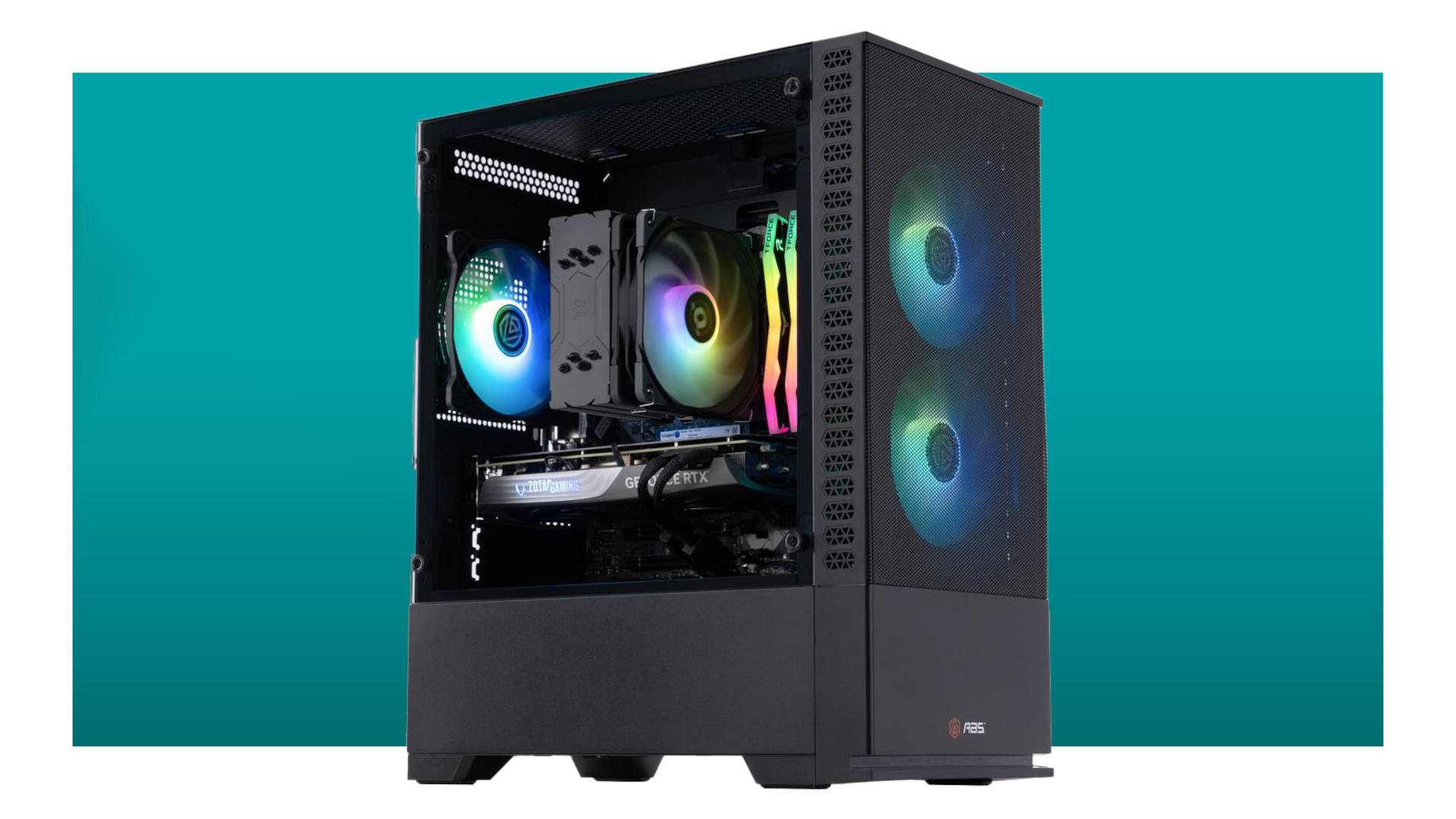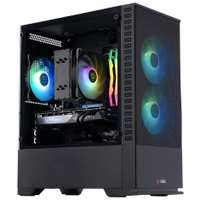Is this the perfect $1,500 gaming PC? Maybe not, but it's pretty darn close
ABS has got the hardware specs almost spot on in this gaming PC.

ABS Cyclone Ruby | Ryzen 7 7700X | GeForce RTX 4070 Super | 32GB DDR5-6000 | 1TB NVMe SSD | $1,699.99 $1,499.99 at Newegg (save $200)
Take a fast eight-core CPU, bags of speed DDR5, and a great mid-range GPU, and you've got an awesome gaming PC. Make it less than $1,500 to buy and it'd almost be perfect. Wait a second...
The sweet spot price for a new, pre-built gaming PC is arguably $1,500. While you can easily spend less or more than this, the hardware that's available for this price is not only capable of blasting through most games around at the moment, but it'll also be perfectly fine for years to come. Finding one that's perfect at this price point is a bit tricky, though.
Well, not really, as this ABS Cyclone Ruby deal for $1,499.99 at Newegg amply proves. Normally we'd round that up, but I just wanted to highlight you're getting a great gaming PC for a solitary cent under our $1,500 bar. First, its CPU is one of AMD's fastest desktop gaming chips, the Ryzen 7 7700X. While it stands in the shadow of its cache-heavy cousin, the Ryzen 7 7800X3D, it's still extremely capable thanks to its eight cores and 16 threads running at up to 5.4 GHz.
Zen 4 Ryzen processors work best when paired with DDR5-6000 RAM and that's exactly what you get here. Specifically, two DIMMs of 16GB for 32GB in total, all running in dual-channel mode for optimum performance. You won't need anything faster or any more in terms of capacity for the lifespan of the PC.
All of that would be for nought if the GPU wasn't up to scratch, but the GeForce RTX 4070 Super in this Cyclone Ruby is the ideal match for that CPU and RAM. Nvidia's Ada Lovelace architecture is very power efficient and the RTX 4070 Super runs quiet and cool, all while offering great 1080p and 1440p gaming performance.
As with all of the RTX 40-series cards, it fully supports all the features in DLSS 3.5, so in games that support them, you'll be able to enable AI-powered upscaling, frame generation, and ray tracing denoising for even more performance or better quality visuals.
There's always one party pooper and in this case, it's the storage. It's a Kingston 1TB SSD and while it's perfectly decent for the money, I'd prefer to see more capacity than this, as the price difference between 1TB and 2TB isn't very big. I know it doesn't seem all that long ago when we were saying things like 'Wow, this has a 1TB SSD in it!' but tech moves fast these days, and it feels a bit mean to only get 1TB now.
The Gigabyte B650M motherboard used in the ABS Cyclone Ruby has two additional M.2 sockets so you'll easily be able to add more SSDs when you run out of space, but they're both PCIe 3.0 spec and only run at x1, which is especially disappointing to see in 2024. To be honest, I don't think I'd bother sticking any drives in these slots.
Fortunately, the rest of the PC is fine, with a decent air cooler on the CPU, some nice RGB fans in the case to keep the rest cool, and the whole thing is rather compact and cute. I'm not sure being cute is a prerequisite for being the perfect gaming PC, but I don't care when the vast majority of this rig is spot on.
Keep up to date with the most important stories and the best deals, as picked by the PC Gamer team.

Nick, gaming, and computers all first met in 1981, with the love affair starting on a Sinclair ZX81 in kit form and a book on ZX Basic. He ended up becoming a physics and IT teacher, but by the late 1990s decided it was time to cut his teeth writing for a long defunct UK tech site. He went on to do the same at Madonion, helping to write the help files for 3DMark and PCMark. After a short stint working at Beyond3D.com, Nick joined Futuremark (MadOnion rebranded) full-time, as editor-in-chief for its gaming and hardware section, YouGamers. After the site shutdown, he became an engineering and computing lecturer for many years, but missed the writing bug. Cue four years at TechSpot.com and over 100 long articles on anything and everything. He freely admits to being far too obsessed with GPUs and open world grindy RPGs, but who isn't these days?


